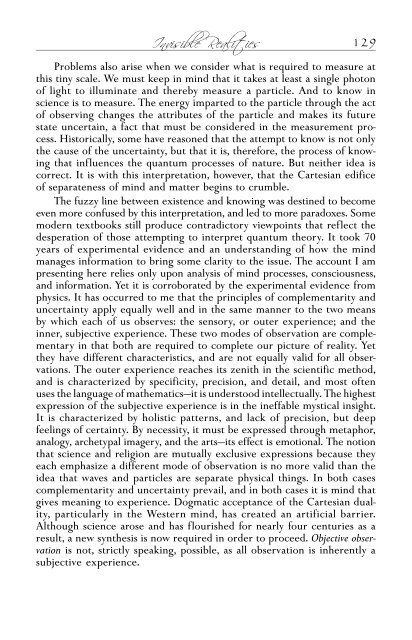edgar-mitchell
edgar-mitchell
edgar-mitchell
You also want an ePaper? Increase the reach of your titles
YUMPU automatically turns print PDFs into web optimized ePapers that Google loves.
Into the Vacuum 65<br />
By reprogramming the computer manually with Houston’s instructions,<br />
we could get it to ignore the false signal and not actually initiate an abort<br />
when the engine ignited. But there was a penalty in this. If an abort were<br />
actually required anytime during the landing, we would need to perform<br />
the lengthy series of tasks manually and fly for a time without computer<br />
assistance. In order to continue the mission, we were surrendering the<br />
help of an automatic abort system that could deliver us into a safe upward<br />
trajectory at the push of a single button, were another emergency to occur<br />
during or immediately after landing.<br />
The entire team performed magnificently during the 90 minutes available<br />
before descent. All the required tasks were completed, with a few<br />
seconds to spare, as we rotated Antares into position for descent engine<br />
ignition.<br />
As is often the case, however, errors in a system tend to propagate.<br />
Although no one realized it at that moment, what we had done to fix the<br />
abort switch would cause the computer not to recognize and lock on to<br />
the radar signals bouncing off the lunar surface as we descended and approached<br />
the landing site. Thus, we couldn’t check our altitude with these<br />
updates, nor could we just look out the window, as we were quite literally<br />
on our backs, feet forward during powered descent, the windows displaying<br />
nothing but a striking pattern of stars. What made this particularly<br />
unsettling was that the Fra Mauro region happened to be a rather rugged<br />
area of the moon, filled with hills, valleys, and craters. Even if our landing<br />
approach was perfect, we wouldn’t have the benefit of a computer abort<br />
system in case of trouble with the terrain. But more immediately, our<br />
mission rules forbade us to descend below known mountaintop levels without<br />
the radar—a height we would reach within the next minute or so.<br />
We worked quickly, our eyes sweeping the control panel, hoping to<br />
spot the problem that prevented the radar system from measuring the<br />
surface of that meteor-scarred region into which we were rapidly descending.<br />
I recall the unusual sense of detachment, one I’d known before on<br />
occasion, in which the mind focuses impersonally on the pattern of required<br />
tasks. Feeling and emotion were vanquished, and just a body was<br />
left, automatically performing the job, searching for a solution to a dilemma,<br />
functioning as an extension of the computers at my fingertips.<br />
Then something occurred to me in this trance-like state. Through some<br />
deep recess of memory I realized that the radar might need to be reset<br />
after the abort switch fix, and that there were but two quick possibilities.<br />
But which to try first Just then, as though reading my mind, Houston<br />
came in with the right call. Al recycled a circuit breaker, the radar locked<br />
on, and we could see that the data we were receiving was accurate and the<br />
computer had been guiding us perfectly. The mission had been salvaged<br />
once again with the help of Houston, this time within scant minutes of<br />
landing.


